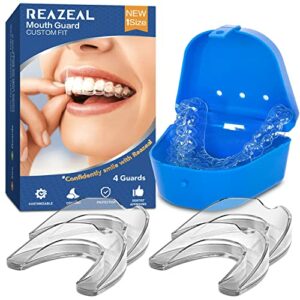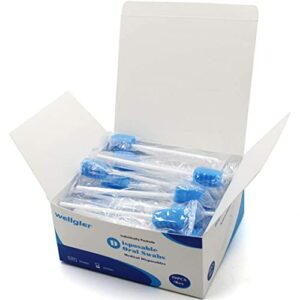In this step-by-step guide, we will walk you through the process of flossing with a floss pick. Flossing is an essential part of maintaining good oral hygiene, as it helps remove plaque and food particles from between our teeth and along the gumline. By following these simple instructions, you will be able to effectively floss using a floss pick, promoting a healthier mouth and preventing dental problems. Let’s get started!
Master the Art of Flossing
Step 1: Gather your floss pick
To gather your floss pick, follow these steps:
- Find a floss pick: Look for a floss pick in your bathroom cabinet or at your local pharmacy. They are usually sold in packs and are readily available.
- Hold the floss pick: Take the floss pick in your hand and ensure that you have a firm grip on the plastic handle. The handle is designed to provide control and ease of use.
- Examine the U-shaped floss: Take a closer look at the U-shaped piece of floss attached to the handle. Make sure it is intact and free from any damage.
- Check the length of the floss: Ensure that the length of the floss is sufficient for your needs. If it seems too short, consider using a new floss pick or get a longer piece of floss.
Remember, having a floss pick is the first step towards maintaining good oral hygiene.
Step 2: Position the floss pick
To position the floss pick correctly, follow these steps:
- Hold the floss pick firmly between your thumb and index finger.
- Make sure your grip on the floss pick is secure but not too tight.
- Position the floss pick in such a way that the floss is easily accessible for flossing.
- Ensure that the floss is taut and ready to be used between your teeth.
Remember, a proper grip and positioning of the floss pick are crucial for effective flossing.
Step 3: Insert the floss pick
Step 3: Insert the floss pick.
Gently guide the floss pick between your teeth, using a back-and-forth motion. Be careful not to force it, as this may cause gum irritation or bleeding. Make sure to get the floss between each tooth and along the gumline to effectively remove plaque and food particles.
Step 4: Curve the floss
To curve the floss around one tooth, start by grasping a piece of floss about 18 inches long. Hold the floss tightly between your thumbs and index fingers. Gently glide the floss up and down between your teeth, making sure to curve it around one tooth in a C shape. Repeat this process for each tooth, moving to a clean section of floss for each tooth.
For example:
- Take the floss and hold it tightly between your thumbs and index fingers.
- Gently guide the floss in an up and down motion between your teeth.
- As you reach one tooth, curve the floss around it in a C shape, ensuring it reaches the gumline.
- Repeat this process for each tooth, using a fresh section of floss for each tooth.
Remember, curving the floss helps to effectively remove plaque from the gumline, promoting better oral health.
Step 5: Slide the floss
To slide the floss properly, gently move it up and down using a sawing motion. Make sure to clean both sides of the tooth thoroughly, reaching beneath the gumline. This will help remove any food particles or plaque that may be hiding in those hard-to-reach areas. Remember, a gentle and consistent sliding motion will ensure effective cleaning without causing any harm to your gums.
Step 6: Repeat the process
To move along to the next tooth, take a fresh section of the floss pick. Ensure that it is clean and ready for use. Then, repeat the sliding motion that we mentioned earlier in Step 5. This will effectively remove any remaining plaque and debris from the tooth’s surface.
Step 7: Reach the back teeth
To reach the back teeth, use the pointed end of the floss pick. Gently guide the pointed end between the teeth, making sure to access the hard-to-reach areas. Be thorough as you floss, ensuring that you clean both sides of the teeth. Remember to be gentle to avoid any discomfort or irritation.
Step 8: Rinse and dispose
After flossing, rinse your mouth with water to remove any remaining debris.
- Take a sip of water and swish it around in your mouth for 30 seconds.
- Spit out the water into the sink.
- Repeat this process until your mouth feels clean and refreshed.
Dispose of the used floss pick in a trash can.
- Look for a nearby trash can or waste bin.
- Drop the used floss pick into the trash can.
- Make sure the trash can is securely closed to prevent any odors or mess.
Step 9: Maintain a regular flossing routine
- Floss your teeth with a floss pick at least once a day.
- Slide the floss pick between your teeth gently, moving it up and down in a sawing motion.
- Curve the floss around each tooth in a C shape and carefully clean along the gumline.
- Repeat this process for each tooth, using a clean section of floss pick each time.
- Make sure to reach the back teeth and pay extra attention to areas where food tends to get stuck.
- After flossing, rinse your mouth with water to remove any loosened debris.
- Remember to replace your floss pick regularly to ensure effective cleaning.
The Final Steps
In conclusion, we hope that this guide has provided you with a clear understanding of how to floss with a floss pick. We understand that maintaining proper oral hygiene can sometimes be daunting, but by following these simple steps, you can make a significant difference in your dental health. Remember, flossing with a floss pick is an effective way to remove plaque and food particles from between your teeth, promoting a healthy smile and preventing dental issues. So, let’s make flossing a regular part of our oral care routine and keep our teeth and gums happy and healthy.
Making flossing easier
Mastering the Art of Flossing for Optimal Oral Hygiene
- Start by choosing the right floss: Look for a floss that is comfortable to hold and easy to maneuver between your teeth. There are different types of floss available, such as waxed or unwaxed, dental tape, or floss picks. Experiment with a few options to find what works best for you
- Use the correct technique: Hold the floss tightly between your thumbs and index fingers, leaving a small section to work with. Gently slide the floss between your teeth using a back-and-forth motion, making sure to reach below the gumline. Curve the floss around each tooth in a C-shape and move it up and down to remove plaque and food particles
- Be gentle and take your time: Flossing may feel uncomfortable or cause slight bleeding in the beginning, but it should not be painful. Apply gentle pressure to avoid hurting your gums. Take your time to clean between each tooth properly, ensuring you don’t skip any areas
- Develop a consistent flossing routine: Make flossing a part of your daily oral hygiene routine. Aim to floss at least once a day, preferably before brushing your teeth. Consistency is key to maintaining good oral health
- Seek guidance from a dental professional: If you’re unsure about your flossing technique or have specific concerns, it’s always a good idea to consult with a dental professional. They can provide personalized advice and demonstrate proper flossing techniques during your regular dental check-ups
- Remember, learning any new technique takes practice, so don’t get discouraged if it feels awkward at first. With time and patience, you’ll become more comfortable and efficient in using flossing techniques
Mastering the Art of Flossing: Your Guide to Effective Techniques
Do you have any concerns about the impact of flossing on your dental health?
Yes, we do have concerns about the impact of flossing on dental health. While flossing is an important part of maintaining good oral hygiene, there are certain considerations to keep in mind. Some people may experience bleeding gums or gum sensitivity when they first start flossing, but this usually improves with regular practice. It’s essential to use proper technique and be gentle while flossing to avoid causing any harm to the gums. Additionally, if not done correctly, flossing can potentially push bacteria further below the gum line, which may lead to infection. Therefore, it’s crucial to learn the proper flossing technique and consult with a dental professional if you have any concerns or questions.
Are you aware of any specific dental conditions or situations that may require modifications to your flossing technique?
Yes, we are aware of specific dental conditions or situations that may require modifications to your flossing technique. Some examples include:
- Braces or orthodontic appliances: If you have braces or other orthodontic appliances, it is important to use special tools like floss threaders or orthodontic floss to properly clean between the teeth and around the wires.
- Gum disease or periodontal pockets: If you have gum disease or deep periodontal pockets, your dentist or dental hygienist may recommend using interdental brushes or water flossers instead of traditional floss to effectively remove plaque and bacteria.
- Sensitive gums: If you have sensitive gums, it may be necessary to use a gentle or soft floss to avoid causing discomfort or bleeding.
- Dental restorations: If you have dental restorations like dental implants, bridges, or crowns, your dentist may advise using floss threaders or specialized floss designed for these restorations to ensure proper cleaning without damaging them.
- Limited dexterity: If you have limited dexterity due to conditions like arthritis or stroke, there are flossing aids available, such as floss holders or electric flossers, that can make the process easier and more effective.
Are you interested in learning about additional tools or aids that can assist with flossing, such as water flossers or interdental brushes?
Yes, we are interested in learning about additional tools or aids that can assist with flossing. Using water flossers or interdental brushes can be helpful for individuals who struggle with traditional flossing methods or have difficulty reaching certain areas of their teeth. These tools can provide an alternative way to clean between the teeth and along the gum line, promoting better oral hygiene. Would you like more information on how these tools work or where to find them?















